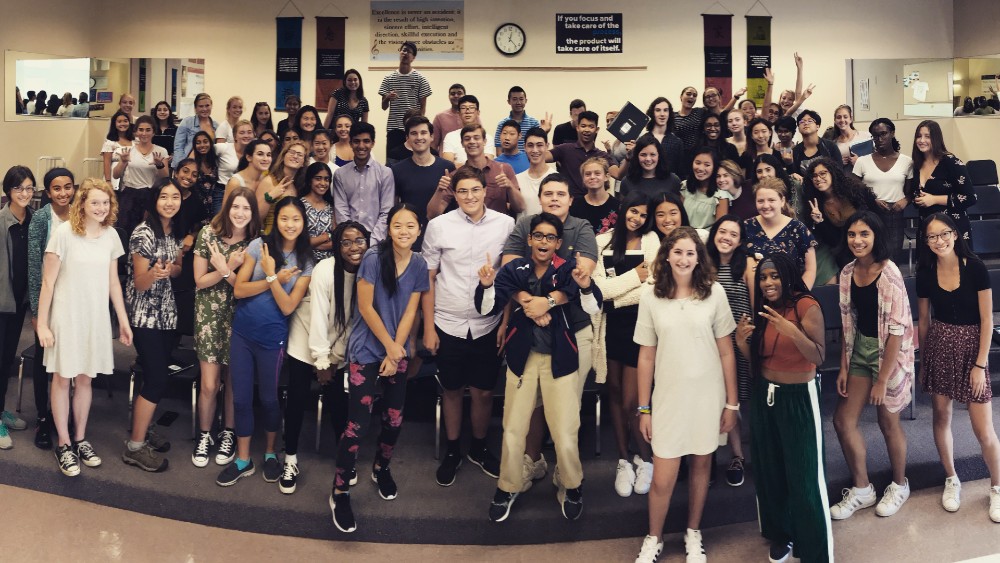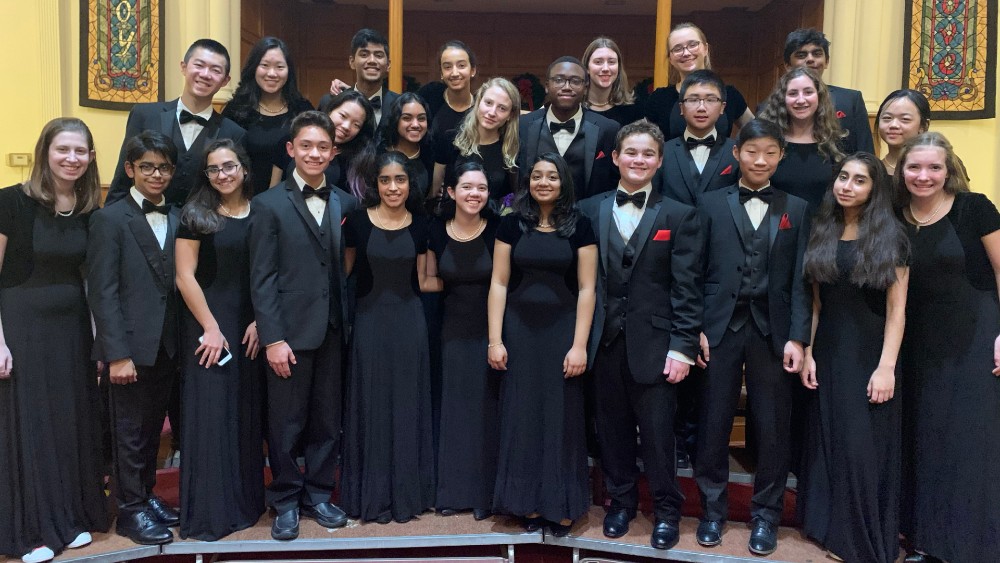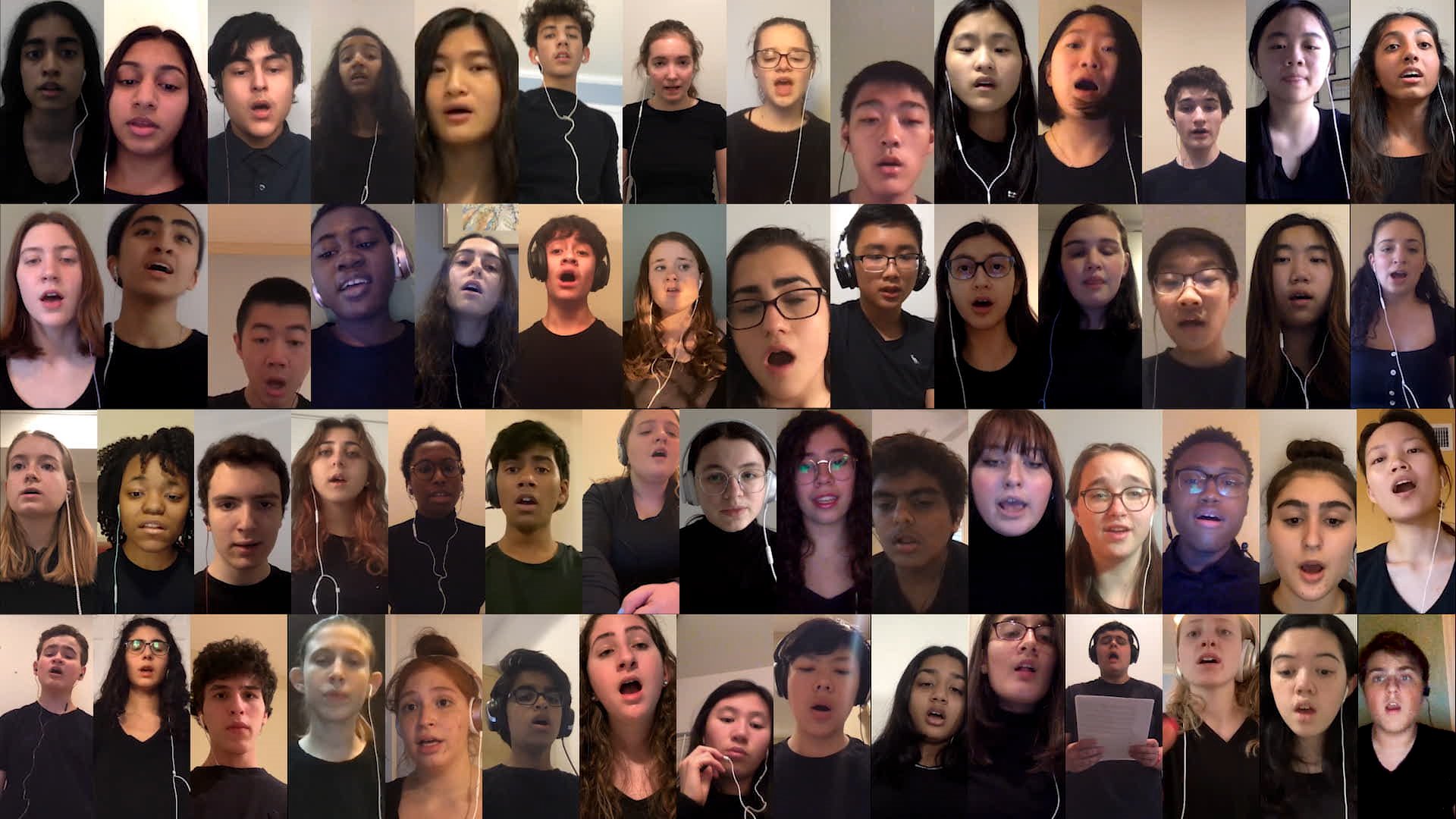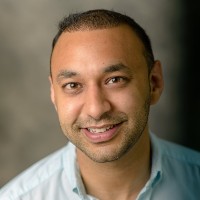
Friday, March 13, fortunately began our two-week spring break at Newark Academy. It wasn’t your typical spring break filled with vacations and trips, but instead gave administrators and teachers a head start to plan remote learning in our classrooms. When school resumed, students and teachers were equipped with technology, software, and platforms to continue our classes both synchronously and asynchronously.
At the time, it was clear that our choral classes could not continue as they normally would. In order to adapt, I began to really think about what my students should get out of a choral experience.
At the top of that list was “connection and community" followed by more direct musical experiences such as opportunities to perform, listen, analyze, think, create, develop technique, understand music theory, etc.
Building a choral community is crucial for any successful choral program. My high school synchronous classes focused on that connection with students. The online platform allowed for each student to be seen and heard and not hide among the group. We shared quarantine stories, we celebrated birthdays, and we enjoyed the time ‘together.’ We also sang in every class. We ran warm-ups and occasionally would have sectionals for pieces we would be recording. The students craved the connectivity with each other.
Maintaining a Sense of Tradition

At Newark Academy, so many traditions were lost due to our culminating events being canceled. Our spring performances often seal students’ commitment to the arts and help them develop a life-long passion for singing and involvement in the choral arts. Concerts provide a feeling of accomplishment, a sense of pride, and create a community of praise and gratefulness.
It was important to me to maintain the sense of tradition that the students were looking forward to experiencing. They deserve it!
Instead of in-person performances, this time our high school singers video recorded their parts for two virtual choirs, as well a "Virtual Cabaret."
Middle school students need more structure and routine to their academic schedules. As such, my middle school online curriculum was more project-based where we explored different ways to be creative and make music since we could not recreate group singing. They created individual performances, sang to a karaoke track, sang harmony to existing tracks, created podcasts, interviewed family members about their musical experiences growing up, and shared quarantine workout routines and recipes. They also video recorded their parts for a virtual collaboration between the middle school band and choir for one song.
Meanwhile, our Chamber Choir audio recorded their vocal parts for two pieces that will be edited, mixed, and produced as a quarantine recording session.
We used music technology (GarageBand) as a means to compose and perform. We watched YouTube videos that taught specific musical skills that we could all learn from. We practiced music theory skills with online lessons that I customized. It’s important to maintain performative aspects of the class so all of these asynchronous assignments were then presented (performed) to the class during our synchronous meetings.
These projects kept the students motivated and engaged with choral music through the remainder of the school year. But, most importantly, every student was seen, heard and celebrated.
Sharing and Trying New Ideas
Choral directors are not alone. We have a large network of educators who are willing to share their knowledge, experience, and creativity with others. I am fortunate to have a network of colleagues who are committed to supporting each other every step of the way. We shared ideas with each other. We shared our success stories and failures. We shared singing app and platform suggestions. New ideas were materializing so quickly that I didn’t even get the chance to try every one out with my students.
A hot topic of conversation was, of course, virtual choirs.
Virtual choirs are a labor of love, as there is an enormous amount of preparation work, but they did keep my students motivated and engaged. The virtual choir is very special for students, families, and the external community. In no way are these projects a replacement for live music-making, but finding connection to a song and spreading a message through song can still be delivered virtually.
There are things missing from a virtual performance though — allowing singers the ability to hear how their voices fit within the greater context of the ensemble, being able to feed off another singer’s energy, being able to simply breathe together, or blending and balancing one’s voice to the group.
However, the arts build community and bring people together. And, in some symbolic way, virtual choirs do just that — from both the singers’ perspective, albeit virtually, and to the greater community.
Building a Skill Set

In virtual settings, I love that every student is being represented and no one is able to hide visually. Valuable skills can be gained from that experience.
It is a skill in itself to be able to sing accurately to a click track or conducting guide video. We all know that singers are notorious for not watching the choir conductor. Well, with virtual recordings, my students had no choice! They all individually had to watch my conducting video in order to sing in time — some struggled while many thrived. But all learned the valuable skill of following a conductor. Ultimately, it was an obstacle they were all exposed to and could grow from.
It’s also a skill to be autonomous with part-independence. In our virtual activities, none of the kids had the luxury of following somebody else, vocally. Every kid had to be a leader. It is a very vulnerable experience for a student to sing to ‘nothing’, but again, it’s a great skill to learn and makes the real-life experience even more special.
Planning for Next Year
I’m preparing for many scenarios for next year. While we may not be able to sing together in person, I’m looking forward to teaching more about the social, emotional, and mental wellness one can achieve through choral music and meditation.
I think it’s important for choir directors, all choir directors, to define what it is that is important for their choristers to receive from a choral experience. Then, from there, decide how to create that experience virtually or in a group gathering that abides by safety measures and social distancing guidelines.
This is definitely not the end for choir, but rather an opportunity to redefine the choral experience given the limitations that we will most certainly have.
This post was contributed by Viraj Lal, Choral Director, Newark Academy. Newark Academy is a co-educational independent school whose mission is to instill engaged individuals with a passion for learning in Livingston, New Jersey.

Viraj Lal has been the Choral Director at Newark Academy in Livingston, NJ since 2007. He holds a Master of Music Education degree from Florida State University and a Bachelor of Music degree from Rutgers University. Viraj is proud to direct nine vocal ensembles at NA, including their top varsity choir Academy Voices. His choirs have performed at Carnegie Hall in New York City with artists such as Sarah McLachlan and Loreena McKennitt. Newark Academy’s choirs worked with guest artist Casey Breves, formerly of Chanticleer, during a weeklong visit as their Artist-in-Residence, as well as Ysaye Barnwell, formerly of Sweet Honey in the Rock, and composer Jim Papoulis. Viraj has held board positions for the following organizations: North Jersey School Music Association, American Choral Directors Association (NJ Chapter), and NJ Music Education Association.

